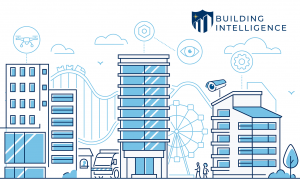Increase Lobby Security
Lobby design is an important element of a company’s complete security plan. As the entry point for the public, the lobby needs to welcome and direct visitors to the visitor management system to register and check-in, while restricting access to unwelcome or uninvited guests. A poorly designed lobby can undermine your entire security protocol and increase operational costs.
While many companies design corporate lobbies with security in mind, this is not the case for all. Some lobbies are designed for convenience, while others focus on aesthetic appeal. Both convenience and visual appeal are achievable in a corporate environment without sacrificing security.
Below are some common lobby security weaknesses that you should address during the lobby design process:
Front Door Visibility
If a receptionist is assisting the enterprise’s visitor management system, the receptionist’s desk should face the front door. The goal is to create visibility for the receptionist, allowing them to see everyone who enters the building, and to draw visitors intuitively to the registration and check-in area to receive visitor ID badges.
Physical Barrier Between Private Offices
A receptionist’s main focus is to greet every visitor while visitors check-in to the visitor management system. A receptionist can easily be distracted when numerous people enter the building at once and the phone is ringing off the hook. A physical barrier, such as a wall separating the lobby from private offices, help a distracted receptionist who may have trouble controlling access at any given moment. If your visitor management system is set up in a way that requires no receptionist, physical barriers between the lobby and the facility’s interior are even more important to avoid guests from wandering into the private office area without completing their visitor check-in process.
Elevator or Stairwell Access
Whenever there is an elevator or stairwell before the reception desk, visitors may assume they have the option to skip the registration and check-in process altogether. The design of your lobby should channel all visitors to a registration and check-in area without providing any alternative access options, such as an elevator or stairwell. Create barriers to any access points that might prevent visitors from following your company’s security protocol.
Separate Entrance for Employees
Employees should have a separate entrance from the company’s front lobby to reduce lobby activity, especially during peak traffic hours. Reducing foot traffic through the lobby makes it easier to observe incoming visitors, and it reduces the chances of a visitor “tailgating” behind an employee, either intentionally or unintentionally.
Restrooms Located in Private Areas
Ideally, restrooms should be available for visitors to access before they reach the registration and check-in area. However, if your restrooms are located within the private area of your facility, ensure all visitors and vendors go through the registration and check-in process before being able to access them.
Lobby Check-In System
Lobby design and visitor management work hand-in-hand to create a secure lobby. Poor lobby design and a paper logbook make it impossible to prevent unwanted visitors from roaming the property. We work with Fortune 100 companies across the world in nearly every industry to provide them with a secure visitor management system. Whether your company has 1 location or 100 locations, visitor management provides security benefits that are not possible with paper logbooks. Talk with Veristream security experts at 1-888-718-0807 to learn how to your lobby security can be increased or schedule a demo online today.



